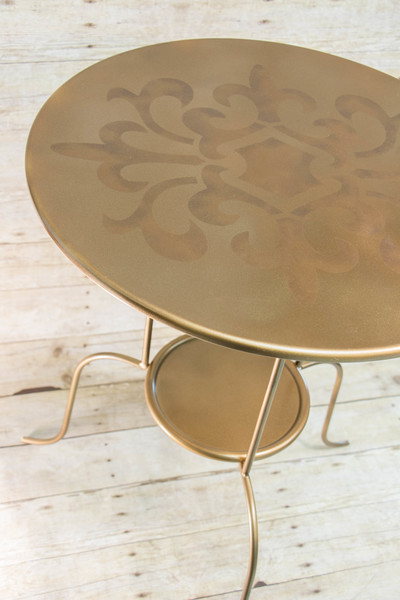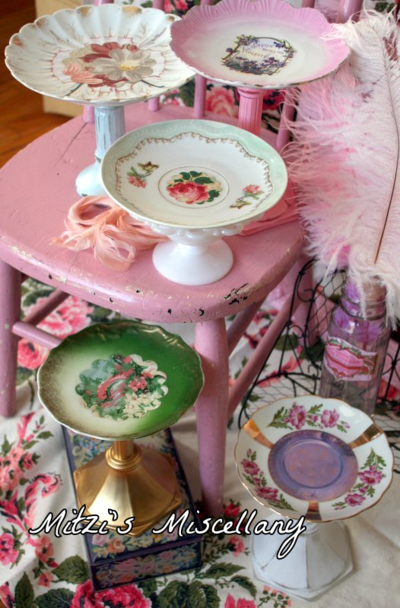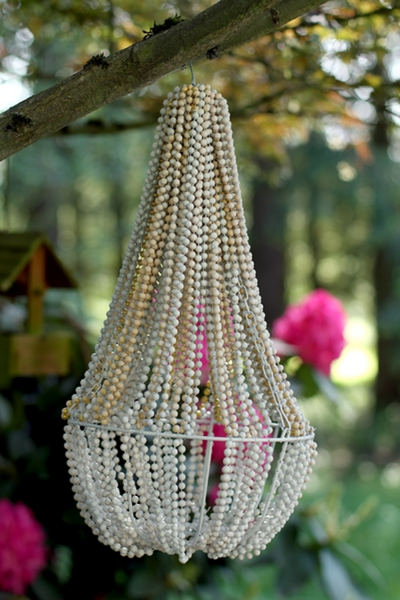Darling DIY Dream Catcher
Use this simple crafting tutorial to learn how to make a dream catcher out of crafting materials you already have in your craft room.

If you are looking to add some light and lovely touches to your home or a baby nursery, consider learning how to make a dream catcher with this simple little craft. Unlike more complicated variations of the DIY dream catcher, this idea simple utilizes twine, fabric, ribbons, and an embroidery hoop. It will take you just under an hour to make the Darling DIY Dream Catcher. Stunning, simple, and great for using up odds and ends, you could add beads and feathers from your stash to add some interest to this DIY craft. While many dream catcher crafts are designed especially for kids, this is a craft for adults and leaves you with a classy cutie you will actually want to display.
Dreamcatchers are said to bring the dreamer a wonderful nights sleep, because they are designed especially to catch the bad thoughts and bad dreams before they enter your slumbering mind. To find out more about the history of dreamcatchers, scroll down to the bottom of this page.
Estimated CostUnder $10
Time to CompleteUnder an hour
Primary TechniqueMixed Media

Project TypeMake a Project
Materials List
- Scrapbook Adhesives by 3L®: Dodz™ 3D
- Donna Salazar with Scrapbook Adhesives by 3L®: Pigment Powder Blue, Pigment Powder Gold, Girlie Grunge Twine in Natural, Lace Ribbons, Texture Ribbons and Canvas Ribbons
- Home & Hobby:Extreme Double-Sided Tape – 1/8?
- Steel Rule Die: Spellbinders® Creative Arts (Birds of a Feather Contour™ Die)
- 8" Embroidery Hoop; Water Mister; Craft Mat
How to Make a Dream Catcher
-
With an 8" embroidery hoop, knot the Girlie Grunge Twine – Natural and went with a random pattern. Knot the end and place the outer hoop back on by tightening the knob.
-
Color the Crocheted Lace Trim (from Lace Ribbons set) with Pigment Powder Blue. The blue color was mixed with water and added into a mini mister.Spray until desired look is achieved.
-
Pool some water on the mat and mixed in the Pigment Powder Gold. Soak up the color with the Crocheted Scalloped Eyelet Trim (from Lace Ribbons set) and set aside to dry.
-
After the colored ribbons dried, adhere them to the bottom of the hoop with Extreme Double-Sided Tape – 1/8?. This tape is a clear, permanent, and extremely tacky craft tape for use on multiple surfaces. Great to have in your craft supplies!
-
The feathers were die cut with White Canvas, Blue Cotton (from Canvas Ribbons set) and White Burlap (from Texture Ribbons set). To create my feathered cluster,adhere the stems with Dodz™ 3D and tied a bow around it with Natural
-
After adhering the feather cluster to the hoop with another Dodz™ 3D and creating a loop with White Satin Organza Ribbon (from Texture Ribbons set) to hang, it’s ready to be displayed!
History of the Dream Catcher
In addition to making darling and vintage décor items, learning how to make a dream catcher attached to some rich and fascinating history. If you are looking to make a crafting endeavor a teachable moment for teens or older kids, a DIY dream catcher activity is a great way to teach them about the history of the First Nations of the United States. Dream catchers were first made by the Ojibwe (often referred to the Chippewa) people. The dream catcher is also often attributed to the Lakota or Sioux nations, as well.
Dream catchers are said to serve a very important perfect the person who creates and owns the item. Like their name explains, dream catches were originally created to protect a sleeping individual by trapping bad thoughts and dreams in its spider-like web before it could enter the individual. It is said that good dreams and good thoughts can slip through the holes in the twine and glide down the feather’s into the sleeping individual.
Traditional dream catchers were much more difficult to make than the DIY dream catcher above. Configured out of a hoop of willow and decorated with beads, feathers, arrowheads, and more, these items were cherished pieces of art. These days dream catchers are mostly created by Native American artists of several nations.
Sources:
http://www.nativetech.org/dreamcat/dreamcat.html
http://www.dream-catchers.org/what-is-a-dream-catcher/
http://aktalakota.stjo.org/site/News2?page=NewsArticle&id=8820
Read NextThrift Store Pedestals





















